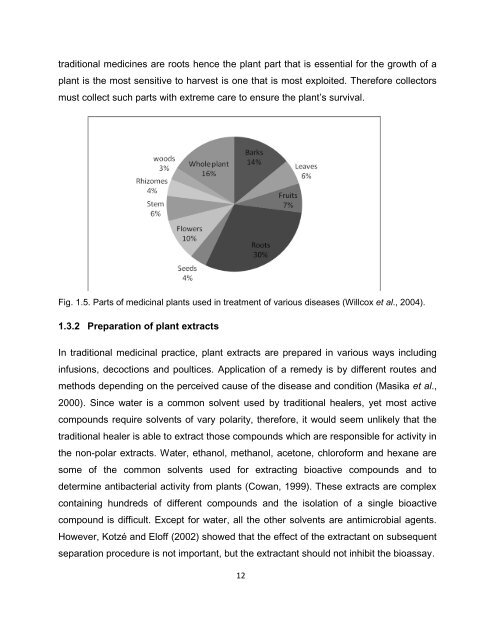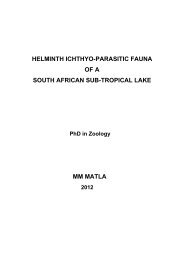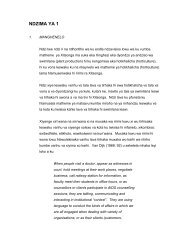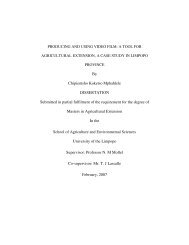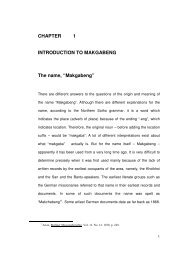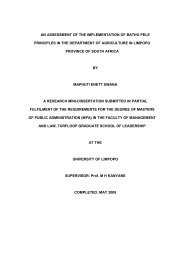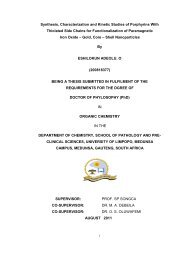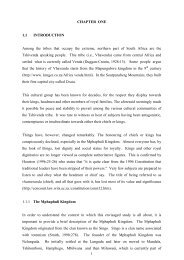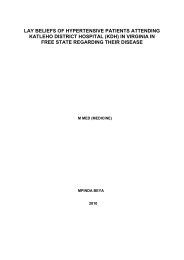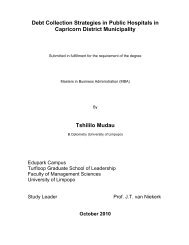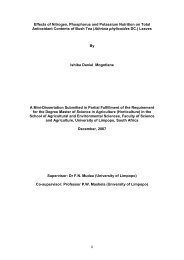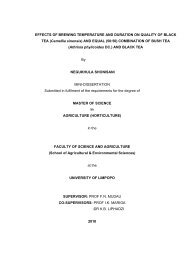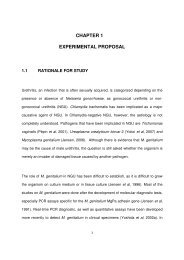Mmushi T MSc (Microbiology).pdf
Mmushi T MSc (Microbiology).pdf
Mmushi T MSc (Microbiology).pdf
Create successful ePaper yourself
Turn your PDF publications into a flip-book with our unique Google optimized e-Paper software.
traditional medicines are roots hence the plant part that is essential for the growth of a<br />
plant is the most sensitive to harvest is one that is most exploited. Therefore collectors<br />
must collect such parts with extreme care to ensure the plant’s survival.<br />
Fig. 1.5. Parts of medicinal plants used in treatment of various diseases (Willcox et al., 2004).<br />
1.3.2 Preparation of plant extracts<br />
In traditional medicinal practice, plant extracts are prepared in various ways including<br />
infusions, decoctions and poultices. Application of a remedy is by different routes and<br />
methods depending on the perceived cause of the disease and condition (Masika et al.,<br />
2000). Since water is a common solvent used by traditional healers, yet most active<br />
compounds require solvents of vary polarity, therefore, it would seem unlikely that the<br />
traditional healer is able to extract those compounds which are responsible for activity in<br />
the non-polar extracts. Water, ethanol, methanol, acetone, chloroform and hexane are<br />
some of the common solvents used for extracting bioactive compounds and to<br />
determine antibacterial activity from plants (Cowan, 1999). These extracts are complex<br />
containing hundreds of different compounds and the isolation of a single bioactive<br />
compound is difficult. Except for water, all the other solvents are antimicrobial agents.<br />
However, Kotzé and Eloff (2002) showed that the effect of the extractant on subsequent<br />
separation procedure is not important, but the extractant should not inhibit the bioassay.<br />
12


